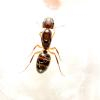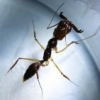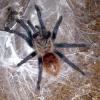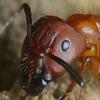I am hoping to create a list of true polygyne ants, the ones that are truely polygynous and won't kill each other after the first few months.
If known, also add if they accept new queens once the colony is established. I only know a few, but I am sure there are others out there.
I will keep updating this list.
Formica cinerea
Formica balcanina
Formica lugubris
Formica sanguinea
Formica ulkei
Lasius flavus
Linepithema humile
Monomorium ergatogyna
Monomorium pharaonis - new queens easily accepted.
Myrmica (some species, like rubra)
Nylanderia spp.
Pheidole megacephala
Solenopsis molesta - new queens will readily group together, older colonies will not merge.
Tapinoma melanocephalum
Tapinoma sessile - new and old queens are easily accepted in another mature colony
Any others?



























